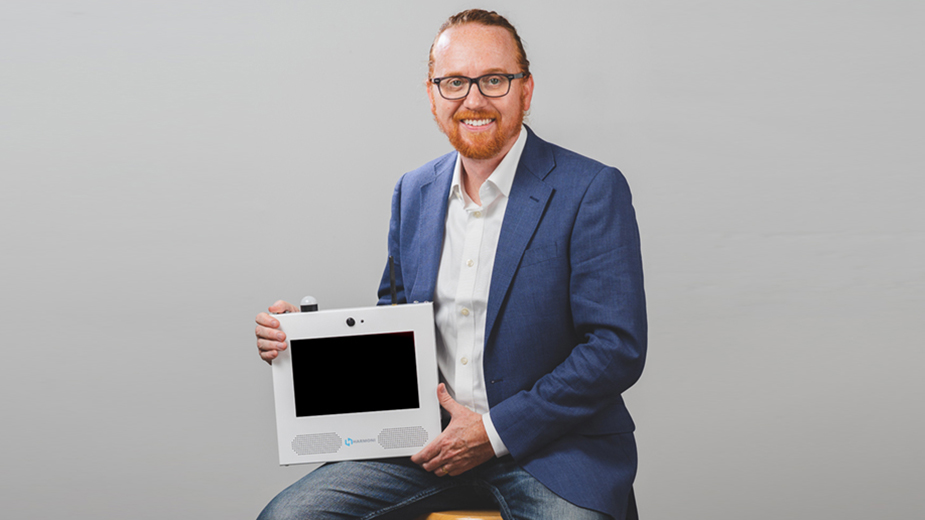Companies Explore Benefits of Industrial ‘Internet of Things’
YOUNGSTOWN, Ohio — A sizeable number of us, whether we know it or not, has been introduced to the Internet of Things – or IoT. From using an Amazon Alexa to remotely adjusting a home thermostat from a smartphone, society and the devices that power it today are more interconnected than ever.
The same goes for business and industry, as advocates of this technology urge companies to become attuned to opportunities that can make them more competitive in the global market, specialists say.
For now, however, the leap into this technology is in its infancy and will take some adjustment, says Rick Stockburger, chairman and CEO of Brite Energy Innovators, an energy business incubator in Warren.
“The adoption curve is just getting people to understand what this is all about,” Stockburger says.
That’s why Brite and the Youngstown Business Incubator have formed a partnership to encourage the growth of the Industrial Internet of Things, or Industrial IOT, across the Mahoning Valley. In October, the joint effort received nearly $313,000 in federal grants procured through the office of U.S. Rep. Tim Ryan, D-17 Ohio, to help integrate Industrial IOT into small and medium-sized businesses in the region.
“People want to understand this technology and they’re glad to have somebody to help them find out what’s doable, what’s not doable, and figure out what’s best for them,” says Barb Ewing, CEO of the YBI.
The partnership allows organizations such as the YBI to help put this technology into effect for companies that, for example, use advanced manufacturing. Or, in the case of Brite, it could be introduced to those businesses that focus on energy-related products.
At the core of Industrial IOT are data, Ewing says. These data are often generated from devices or sensors attached to pieces of equipment that can generate real-time information to operators and managers to gauge productivity, efficiency and output.
“It takes basic concepts to the next level,” Ewing says. Data produced from a certain machine, for example, could identify a potential problem such as a component in need of replacement. By retrieving this information, the company is able to take measures and correct the issue before any damage is done to the equipment or cause an unnecessary work stoppage.
“It allows you to do things that are important to operations – basic stuff such as preventive maintenance or identifying gaps in the supply chain,” Ewing says.
As companies become more comfortable with handling and analyzing these data, they could use them for other operations on the shop floor. Depending on the nature of the business, they could also leverage this technology for more advanced uses, such as remotely operating or monitoring production in an entire plant.
Applying this technology in heavier manufacturing environments could prove challenging. Even industrial producers such as Vallourec’s seamless pipe and tube operations in Youngstown and Houston are in the initial stages of exploring the opportunities with Industrial IoT.
“We’re early down that path,” says Pat Kiraly, Vallourec’s North American director for Industry 4.0, a sort of catchall term for emerging automation and technological advances in manufacturing.
Kiraly says his very title underscores Vallourec’s interest in digitally transforming the company’s operations. “I see Industrial IoT as an opportunity to collect even more data, which is a good thing,” he says. The real challenge is to properly digest and analyze these data, on top of data currently produced through operations.
Also, manufacturing seamless pipe and tube is not the same as operating a CNC machine that could be more easily monitored, Kiraly says. Using sensors or tags embedded into pipe for tracking purposes, he points out, could be helpful and efficient, but especially tricky to effect.
“Putting identification on a pipe that is at 1,500 degrees – it’s difficult to do since the environment is so harsh,” Kiraly says. “But if we can do these things, we could do other things.”
Kiraly characterizes Vallourec’s early foray as a “precursor to Industrial IoT.” That is, taking the initial step in evaluating where this technology could be introduced.
One operation is the Youngstown plant’s piercing process, Kiraly says. Pipes are fed into the piercing operation as a solid billet and then heated to high temperatures. The billet is then punctured with a piercing point, forming the outside shell of the pipe.
The idea would be to add sensors to piercing points so they could collect data related to the process, Kiraly says. “There are still certain things that are not easy to understand,” he says of the piercing operation. “We’re looking to leverage some of that technology to better understand the process through the use of sensors.”
Introducing Industrial IoT would enable Vallourec to extract data that it previously was unable to collect, Kiraly says. “The next step is to how you use this data. At the same time, this technology allows you to push these boundaries even further.”
Ultimately, this technology is likely to play a much larger role in how manufacturers, distributors, vendors and other sectors of the economy conduct business, Brite’s Stockburger says.
“We’re excited to partner with YBI to implement this and help companies realize what could be done,” he says.
Industrial IoT affords businesses the ability to gather data that can better influence decisions. “It’s about using actionable data before there’s a problem,” Stockburger says.
Moreover, Industrial IoT opens the door to expansion for companies that develop and manufacture sensor technology, Stockburger says.
He relates one of Brite’s portfolio companies, Intwine Connect, is in the business of developing IoT and Industrial IoT applications for clients in health care, manufacturing, food safety, education and energy.
“It’s not just manufacturers,” Stockburger says. Intwine, he notes, developed an application for a national hand-sanitizing company that automatically alters vendors when its sanitizing stations are running low and need to be replenished. “There are so many efficiencies,” he says.
Stockburger wants to encourage other companies in IoT to consider locating operations in the Mahoning Valley region to develop its products, he says.
“Then, we could help get those companies to market so they could make better IoT products for industry.”
One such business is Wooster-based Harmoni, a portfolio company of the YBI.
“I’ve been in consulting for CNC machine shops for 25 years,” says Harmoni CEO Adam Ellis. It was in this role that he noticed a host of shop floor inefficiencies that he believed could be addressed. “Operators were walking back and forth to PC terminals to track their time and production,” he says, while using even more time to locate data storage devices to load specific programs on to a certain machine.
“Some guys would even load the wrong program,” Ellis says. “It’s wasting minutes here and there that really add up to a lot, especially in the high-end CNC space with aerospace and defense,” he says.
Beginning during the COVID-19 pandemic, he and his business partner spent three years to develop a new device that plugs into the controls of a CNC machine. This product is able to collect and provide specific data such as time tracking, production, the proper program for the machine — even the work instructions on how to complete the job, Ellis says.
“We tie it all together and take this great stream of data coming off the machine and pair it up with labor time,” Ellis says. An operator, for example, is automatically identified and clocked in at the machine. That operator might be at a machine for eight hours. Only six of those hours were used for machining or cutting. The other two hours could have been devoted to waiting for input or some type of component changeover.
“That way, you could read the real-time data on the machines,” he says, including tool life and machine performance.
Harmoni has completed some Beta testing and is now beginning to market the device, Ellis says. “We’ve found some success with it,” he says. A recent webinar the company hosted attracted 87 participants.
Companies that are first to streamline operations by adopting Industrial IoT technology stand a better chance to become more competitive and profitable, Ellis says.
“There are opportunities but there are also challenges for companies,” he says. “The folks that can really clinch it right now are going to be able to take advantage of all the re-shoring going on and improve across the board.”
Pictured above: Adam Ellis, Harmoni CEO.
Copyright 2024 The Business Journal, Youngstown, Ohio.



